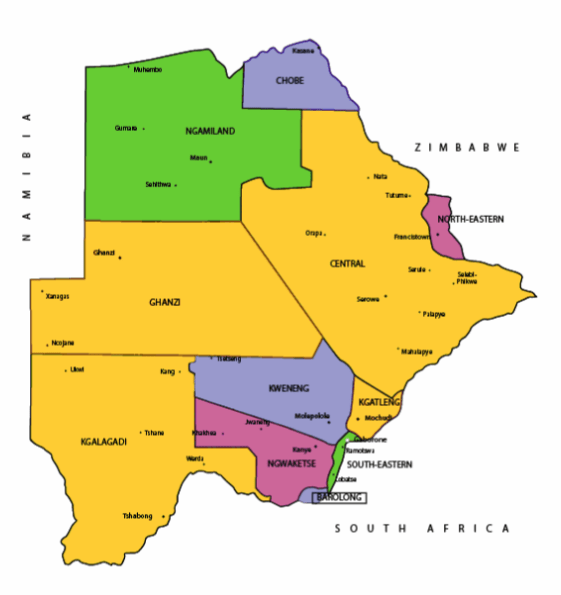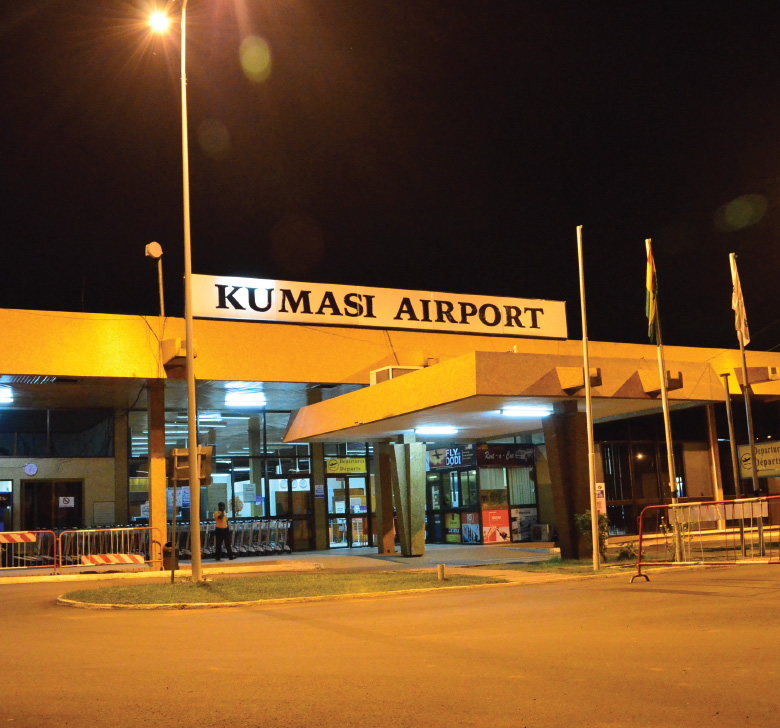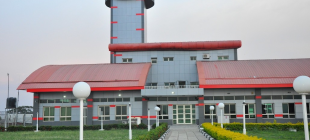Sir Seretse Khama International Airport is the leading airport in Botswana.
It is located about 10 km north of the city of Gaborone (the country’s capital).
It offers large capacity to handle regional and international traffic and has the largest passenger movement in the country.
It’s one hour flight from Johannesburg and two hours flight from Harare.
Sir Seretse Khama International Airport was opened in 1984.












The runway is 4000 m long and 45 m wide. The runway pavement is of concrete. The runway strength is designated as Pavement Classification Number (PCN) 75/R/B/W/T.
In addition, the runway is oriented West-East (08-26) and is edged with two 7.5 m wide shoulders and two 60 m long stop ways. Its maximum longitudinal slope is 0.2% and its average slope is 0.08 %.These characteristics are in accordance with ICAO Standards and Recommended Practices (SARPs).
Contact
• AIRPORT MANAGER
Airport Manager
+267 3914401
• OFFICER IN CHARGE AIRPORT POLICE
Officer in Charge Airport Police
+267 3909935
• RESCUE COORDINATION CENTRE
Rescue Centre
+267 3914403
• PRINCIPAL AIR TRAFFIC CONTROL OFFICER
Principal Air Traffic Control Officer
+267 3914404
• AREA CONTROL CENTRE
Area Control Centre 24 hours
+267 3959440
Passengers information
- Security measures are taken to inspect persons and property being brought into restricted areas of airports and on all departing passengers, baggage and cargo.
- Refusal to submit to inspection will result in prohibition to enter an airport restricted area or to board an aircraft.
- There is an international restriction on the carriage of Liquids, Aerosol and Gels (LAGs) on board aircraft. Passengers are allowed to carry a total of 100 ml in a Security Temper Prove Bags (LAGs) in their carry-on baggage.
- A passenger who has taken excess alcohol will not be allowed access into any airport restricted areas or board the aircraft.
- All vehicles are to be parked in the car park for a limited time, for example, five days for persons who are travelling by air.
- The car park may have specific parking areas, depending on the length of stay in the parking area.
- Parking is not allowed in front of terminal building or on restricted areas.
- Please be adviced that visitors parking at SSKIA is charged starting from 30 minutes onward.
- The public is only allowed access into public areas of passenger terminal buildings.
- Access to departure lounges is restricted to travelers, with valid boarding passes.
- Parties, rallies, campaigns and similar events are not allowed at airports. Events such as formal reception of celebrities, clubs, conference participants, etc, must be done through formal approval and the organizers will be required to comply with all security and public safety requirements
- Loitering, soliciting and similar conducts are not allowed at airports.
List of Scheduled Air Services
- Air Botswana
- SA Air link
- Ethiopian Airlines
Non-Scheduled Operator
- Mack Air
List of airports in Botswana
Botswana has 6 airports. There are:
- Sir Seretse Khama International Airport
- Maun International Airport
- Kasane International Airport
- PG Matante International Airport
- Selebi-Phikwe Airport
- Chanzi Airport
The airports are controlled by Civil Aviation Authority of Botswana (CAAB).
Civil Aviation Authority of Botswana (CAAB)
CAAB regulates air transport, provides air navigation services, manages airports and advises the government on all aspects of civil aviation.
Reference: caab.co.bw/sir-seretse-khama-international-airport/
Botswana
Botswana is a country in Africa. It is topographically flat, with approximately 70 percent of its territory being the Kalahari Desert.
It is bordered by South Africa to the south and southeast, Namibia to the west and north, and Zimbabwe to the northeast.
Capital: Gaborone
Currency: Botswanan Pula
Official language: English
Population: 2.588 million (2021) World Bank
Dialing code: +267
Gross Domestic Product: 17.61 billion USD (2021) World Bank
Botswana’s ten districts are:
- Southern District
- South-East District
- Kweneng District
- Kgatleng District
- Central District
- North-East District
- Ngamiland District
- Kgalagadi District
- Chobe District
- Ghanzi District
Botswana’s councils created from urban or town councils are: Gaborone City, Francistown, Lobatse Town, Selebi-Phikwe Town, Jwaneng Town, Orapa Town and Sowa Township.






The name Botswana refers to ‘Land of the Tswana’. The landlocked, Southern Africa country is officially known as the Republic of Botswana.














Botswana is connected to Zambia through the Kazungula Bridge making it the world’s shortest border between two countries.
A country of slightly over 2 million people (2021), Botswana is one of the most sparsely populated countries in the world. It is essentially the nation state of the Tswana ethnic group, who make up 79% of the population.

About 11.6 per cent of the population lives in the capital and largest city, Gaborone.
Formerly one of the world’s poorest countries—with a GDP per capita of about US$70 per year in the late 1960s—it has since transformed itself into an upper-middle-income country, with one of the world’s fastest-growing economies.


The Tswana ethnic group were descended mainly from Bantu-speaking tribes who migrated southward of Africa to modern Botswana, living in tribal enclaves as farmers and herders.




In 1885, the British colonised the area and declared a protectorate under the name of Bechuanaland.
As colonisation stopped, Bechuanaland became an independent republic under its current name on 30 September 1966.


Since then, it has been a representative republic, with a consistent record of uninterrupted democratic elections and the lowest perceived corruption ranking in Africa since at least 1998.

The economy is dominated by mining and tourism. Botswana has a GDP (purchasing power parity) per capita of about $18,113 as of 2021, one of the highest in subsaharan Africa.


Botswana is the world’s biggest diamond producing country.
Its relatively high gross national income per capita gives the country a high standard of living and the third-highest Human Development Index of continental Sub-Saharan Africa (after Gabon and South Africa).
The country has been adversely affected by the HIV/AIDS epidemic. In 2002, Botswana began offering anti-retroviral drugs (ARVs) to help combat the epidemic.
Botswana is a member of the Southern African Customs Union, the Southern African Development Community, the Commonwealth of Nations, and the United Nations.




